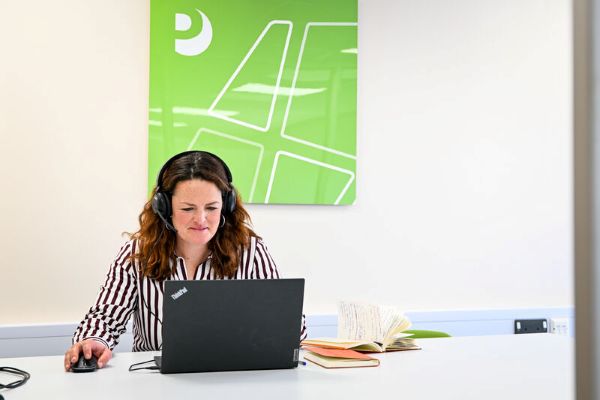
5 simple steps to improve SEO with PR
Public Relations (PR), as a term has been with us for around one hundred years. By comparison, Search Engine Optimisation (SEO) is a juvenile 23 years old this year. These two world-changing industries have more in common than may first appear.
We are going to share 5 top tips on how to improve your SEO in 2020 and how these relate to your PR campaign activities.
1 - Put your audience first
There’s a very good reason why Google has a monopoly on Search Engines. It has a 92% global market share and it puts the users first.
If you ever find yourself on an alternative search engine, you’ll often notice very quickly that the experience is very different to Google - and not always due to the design of the page. You’ll typically find that the answers provided to your searches weren’t quite what you expected. This is the power behind Google’s method; they put the audience first.
Written by...

Google has put over 20 years of development into their algorithms, processes, data capture and retention without ever forgetting this core value. All past, present and future updates to their search engine will prioritise user interests.
This means that our objective as PR and marketing teams is to gain the best possible understanding of our audiences, so we can connect with them regardless of what the future of SEO holds, particularly if web traffic is significant for your commercial business or reputational profile. As a PR agency that specialises in rural and agriculture industries, we have built our team up with talented individuals from a mix of farming and rural backgrounds and from the communications professional sphere. This helps us truly understand and empathise with our clients and their audiences, a skill that will always add value.
2 - Prioritise real content like BERT
Search engines are quite simple on the surface; you input a question or statement and they provide the best answers to meet your search. Google has maintained their market share because they continue to provide the best answers.
Their new BERT algorithm is a significant step in understanding what makes a ‘good answer’. Using neuro-linguistic programming (NLP), the BERT algorithm looks at understanding the context of phrases and statements, rather than just looking at the individual words and combinations. For example, let’s look at a phrase like:
“Can you get medicine for someone pharmacy”
Before the BERT update, Google would provide answers focused on the keywords “Can you get medicine” and “pharmacy”, showing results for generic information about completing prescriptions and local pharmacies.

Now with BERT, the context of “for someone” is better understood, so Google will aim to provide answers based on this context, even if it requires or relies on a different keyword phrase to achieve the same context.
This is one step closer to a truly natural form of SEO, where there are no ‘tricks’ or ‘hacks’ to the system, but instead the best answers are provided to the questions people are looking for. So where does this leave us?
Look beyond littering content with ‘key words’. Our role is now (and always should be) to create great content that people would want and choose to find.
3 - EAT your competitors
Not literally, but EAT (Expertise, Authoritativeness, and Trustworthiness) is a powerful asset to any organisation or brand’s digital presence. In this part of SEO, brands and individuals have a reputation that impacts their visibility for crucial search terms by prioritising trusted sources.
If a brand or author has a better reputation, customer experience, quality reviews and high degree of trust, these factors will provide a significant advantage to organic results. In particular, these are most impactful on YMYL (Your Money or Your Life) pages. These pages are not just about money, but any pages or content that are critical to the audience. They could include technical information diagnosing herd illnesses, highly topical news articles, product pages and more.

Google is looking at historical PR factors that would influence trust and reputation and bringing them online. So what can we do to EAT our competitors?
- Make sure you are gathering and encouraging digital reviews and representing your customer service and support online
- Raise the profile of your brand or individual brand influencers
- Bring your offline events online, with events, awards, expos and networking events having digital listings and presence
4 - Build for trust, not just for links
Link building has been a highly debated and controversial aspect of SEO since its inception. Before we look at how to use it now and in future, we must first look at why it was created, to measure trust.
There are few quantitative methods of measuring the trustworthiness of a brand. How do you measure something that is subconsciously established and emotionally connected?
One way to measure the authority of a publication or author is to look at how often they are cited and referenced and sources of information. If a website is referred to often and frequently by reliable publishers then they have some amount of credibility. This was the basis of link-building and SEO trust and some of this was lost over the years.

Fortunately, the technology is catching up to the idea, with Google using many factors to measure the trustworthiness of a website. Whilst link building is not inherently negative, it’s better to look at it as the net result of a campaign designed to establish credibility and trust.
How can you increase the trust of a brand?
This is where PR comes in, a century-old industry originally created to help manage the trust and relations between a brand and the public.
5 - Combine PR and SEO to maximise returns
You might have spotted a common trend within these tips, SEO is becoming less and less about who is able to best ‘game’ the system. Instead, all of Google’s advanced algorithms and machine learning are working towards prioritising:
- Understanding the audience
- The intent of their queries and needs
- Providing the best answers they might hope to find
- How credible this information is based on its author’s trust

These are all core values of good quality PR, regardless of whether it forms part of an SEO campaign. If combined, these fit so naturally and support one another that they are greater than the sum of their parts. An SEO campaign led by PR strategies is a powerful tool for any business in 2020 and beyond.
Many organisations are already doing some aspect of SEO and PR, but if you treat them as parts of the same machine you’ll find it’s easy to improve the results. As for us, we like to believe we understand the farming and rural industries better than any and look to combine our traditional PR and digital communications knowledge with new SEO nuances to further advance reputational profile and market credibility.
More recent insights

Open Farm Sunday – bringing comms strategy to life

What is regenerative farming?
